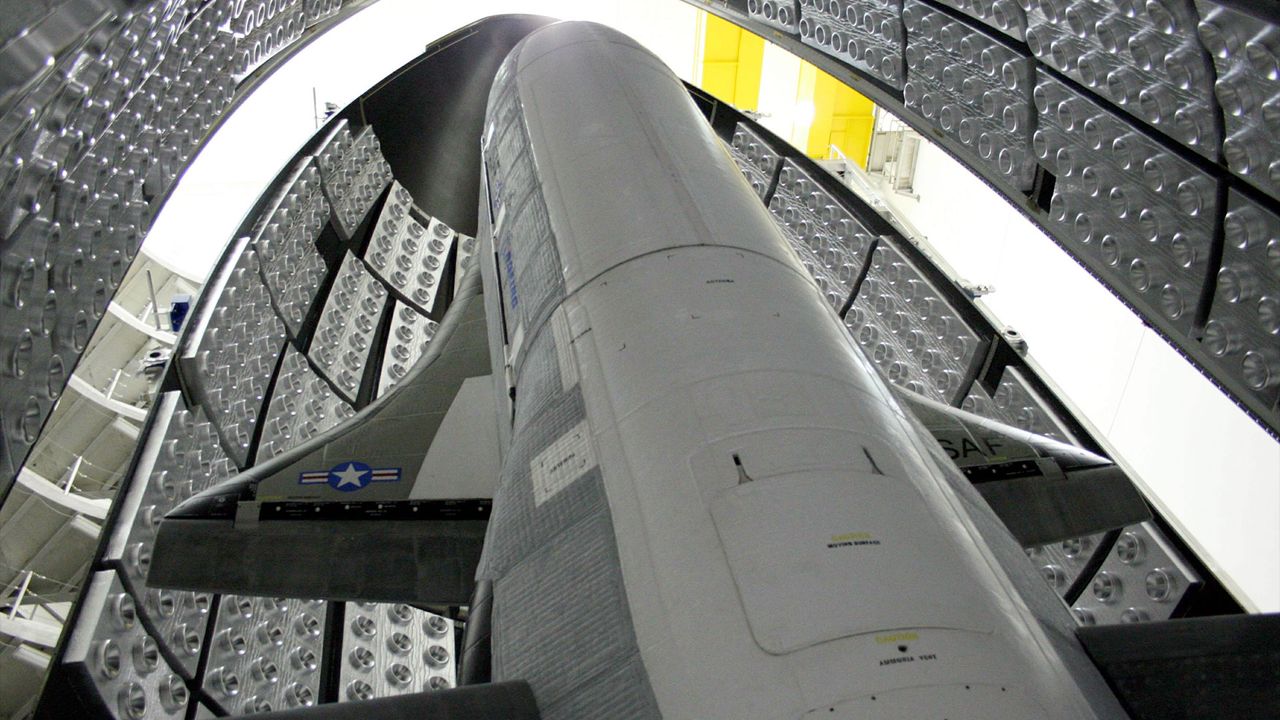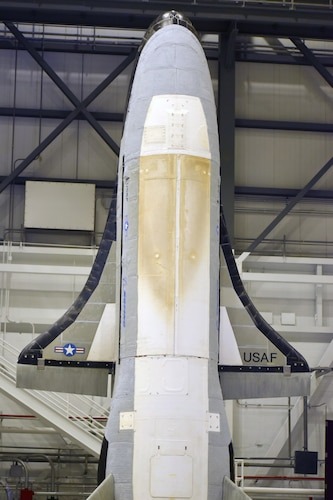
The U.S. Space Force's secretive X-37B space plane is poised to launch to orbit once again.
The X-37B is slated to lift off atop a SpaceX Falcon 9 rocket on Aug. 21 from NASA's Kennedy Space Center in Florida, Space Force officials announced on Monday (July 28).
This will be the eighth mission to date for the robotic X-37B, which is also known as the Orbital Test Vehicle. So the Space Force calls the upcoming flight OTV-8.
OTV-8's launch will come 5.5 months after the X-37B's most recent return from space. That runway landing wrapped up the 434-day-long OTV-7 mission. Space Force officials have not said how long OTV-8 is expected to last.
We do know a little about the payloads going up on the 29-foot-long (8.8 meters) X-37B, which looks like a miniature version of NASA's old space shuttle orbiters. OTV-8 will help demonstrate some new technologies, including laser communications and a quantum inertial sensor, according to the Space Force's July 28 statement.
The X-37B will perform examinations using "the highest-performing quantum inertial sensor ever tested in space," Space Force officials said. The mission will also focus on a laser communications experiment involving "proliferated commercial satellite networks in low Earth orbit (LEO)," which likely refers to SpaceX's huge Starlink broadband network.
"OTV-8's laser communications demonstration will mark an important step in the U.S. Space Force's ability to leverage proliferated space networks as part of a diversified and redundant space architectures," Chance Saltzman, the Space Force's chief of space operations, said in the statement.
Laser communication has benefits over traditional radio frequencies, including more robust data capabilities and less susceptibility to covert transmission interception.
Tapping into constellations like Starlink, which currently boasts more than 8,000 operational satellites in LEO, "will mark an important step in the U.S. Space Force's ability to leverage proliferated space networks as part of a diversified and redundant space architectures," Saltzman said. "It will strengthen the resilience, reliability, adaptability and data transport speeds of our satellite communications architecture."

X-37B's quantum inertial sensor will test the reliability of navigating in space without traditional GPS. Instead, the sensor will assess its orbital coordinates by measuring the rotation and acceleration of nearby atoms.
Saltzman called the sensor "a welcome step forward for operational resilience." Such technology could allow a probe to navigate successfully where there are no GPS networks, such as the moon, Mars and other deep space destinations.







